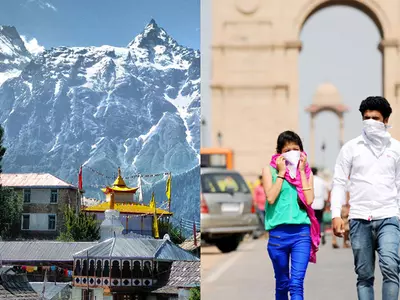Kinnaur Has India’s Best Air, And Delhi Has The Worst, According To IIT Study Of Satellite Data

A study by the Centre for Atmospheric Sciences at IIT Delhi, which looked at exposure to PM 2.5 and premature deaths caused by the particulate matter pollution, has revealed that Kinnaur in Himachal Pradesh is the cleanest district while Delhi is the dirtiest metropolitan area in the country.

iitdelhi
According to researchers who relied on satellite-based estimate, PM2.5 in Kinnaur was found to be 3.7+-1 microgram per cubic metre (g/m³) annually, which is less than 10% of the national air quality target of 40g/m³.

youtube
Delhi's PM2.5 level, they added, stood at 148+-51g/m³ annually, which is several times higher than the safe limit.
Short-term exposure to PM2.5, a widespread air pollutant, causes bronchitis, allergies, persistent cough and inflammation of airways. But chronic exposure to these fine particles emitted from vehicles could lead to premature deaths as a result of chronic obstructive pulmonary disease (COPD), ischemic heart disease (IHD), stroke and lung cancer.
According to the IIT study, 2.79 lakh Indians die prematurely because of COPD, 1.1 lakh die of IHD, 88,700 of stroke and 14,800 deaths are caused by lung cancer. Many more die because of indoor air pollution that is caused by the burning of biomass fuels in rural areas, Sagnik Dey, one of its authors, told TOI. The study has been published in "Environment International" journal.

BCCL
He said only coordinated efforts by all states could prevent such deaths. Dey suggested steps such as curbing vehicle emissions, checking the use of biomass fuels and large-scale plantations to tackle the problem of air pollution. "At present, only 0.06% of the population is breathing safe air as defined by WHO," he said.
If India manages to achieve an annual target of 40g/m³ for PM 2.5, almost 45,000 people can be saved from dying prematurely because of illnesses linked to high levels of pollution, researchers claim.
The 2010 Global Burden Diseases report by WHO used a common methodology for all countries, but the IIT experts said they used different parameters for different districts to ensure better results. "Delhi, for example, may be the dirtiest metropolitan area in terms of ambient PM2.5 level, but premature deaths are lower in the city because of better health facilities," said Dey.

BCCL
On the Delhi government's odd-even initiative, the IIT professor said it was too early to deliver any verdict. "At best, it shows the government intends to do something to reduce pollution. But we will have to wait to see whether it works or not," he added.

























